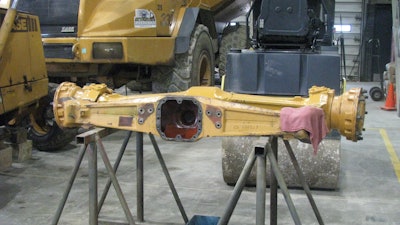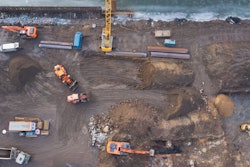
Construction work requires more skill to be profitable when compared to other types of companies. Each job is different and may wind up with a different crew requiring special skills. Your ability to complete the work often depends on someone else’s ability to get their work completed. Weather can delay a project. Costs keep bouncing around. A job may require special equipment that you don’t own. Owned equipment must be ready to go and provide a 90% uptime percentage.
Mix this all together with the competitive environment many contractors find themselves in and there is very little room left for inefficiency on the jobsite. Small errors or problems can quickly turn a profitable job into a loss on the books and a deficit in the bank account.
To avoid problems in the field, your estimators need to provide do-able, profitable bids. Labor and equipment must then execute according to plan to meet the budget in terms of costs and timelines. And finally, management must close out the job and collect for work performed.
Maintain Your Team with Training and Technology
In today’s technological world, even if you execute all the above, continuous maintenance of profit-generating areas is a must. There are essentially three basic performance areas to consider:
- Pre-Field Work — Internal personal who plan and price out the work
- Field Work — Execution by labor and equipment
- Post-Field Work — Close out the job, compare results to bid and planning documents and note potential improvements for similar projects going forward
Maintain your internal personnel with constant training and exposure to new products and services that make their work more efficient and meaningful. Personnel should attend conferences and off-site industry-specific training whenever possible, with a goal of returning to the office with new ideas and performance goals to gain traction as a result of technology such as artificial intelligence.
To gain further insight into new opportunities, management should discuss ideas with peers who have installed upgrades into their systems and inquire about intended and actual payback on their investment. Times are changing in the construction industry. Pricing is sure to become much more competitive if you are bidding against “high-tech” companies that have invested in both systems and training.
Maintain your field personnel in a similar fashion. Establish a funnel to attract workers to the company. Train them with your current equipment and make sure they are trained properly on the rental equipment you use.
Have your local equipment dealers introduce new models and features to field personnel, who can then report back to management if significant benefits are available.
Field personnel and field management should be given current and timely information on where they stand in the project production plan so that additional effort can be applied if needed to get back on track. There are many reasonably priced systems to aid in tracking project progress, hours worked on specific jobs or hours worked by machines in the field.
Assess How You Maintain Owned Equipment
Your equipment will in all probability make you or break you on almost every job you start. If your owned equipment is not maintained to provide 90% uptime, you are behind the eight-ball right off the bat. And if you don’t make arrangements to have any required specialty equipment on site when you need it, you won’t attain the performance results anticipated, and the job is most likely to break even or produce a loss.
Owned equipment maintenance is high on the priority list when it comes to meeting field performance goals. A full maintenance plan using OEM-suggested maintenance standards is where you start. In addition, someone in the shop should be responsible for maintaining the schedule and reporting back to management that the internal maintenance work has been completed.
Major work requiring a formal overhaul or replacement should be scheduled for your slow period (if you have one). However, having this work completed by technicians who aren’t qualified to do what is required may upset your 90% uptime requirement.
Major refurbishing work should be discussed with your dealer to determine what technology is required to do it “right,” how much the parts or components will cost compared to what you would pay for them and the numbers of hours required to do the work. In many cases, it will be cheaper in both the short and long run to have the major work performed by qualified dealer techs, where you can probably get some sort of warranty for the work performed.
In short, owned equipment must be:
- managed, maintained and ready to go as needed,
- maintained based on your schedule in the field,
- and replaced once the combined cost to own and operate plus the cost of downtime exceeds 30% of the cost of a new unit.
If you are going to maintain your owned fleet, then maintain it as if it is a matter of making a profit or generating a loss. There is no other alternative.
Time is money and that goes for both field personnel and equipment on the jobsite. Times are also changing, and you cannot perform a job with a poorly maintained fleet and hope to remain competitive.
Garry Bartecki is the managing member of GB Financial Services LLP and a consultant to the Associated Equipment Distributors. He can be reached at (708) 347-9109 or [email protected].




















